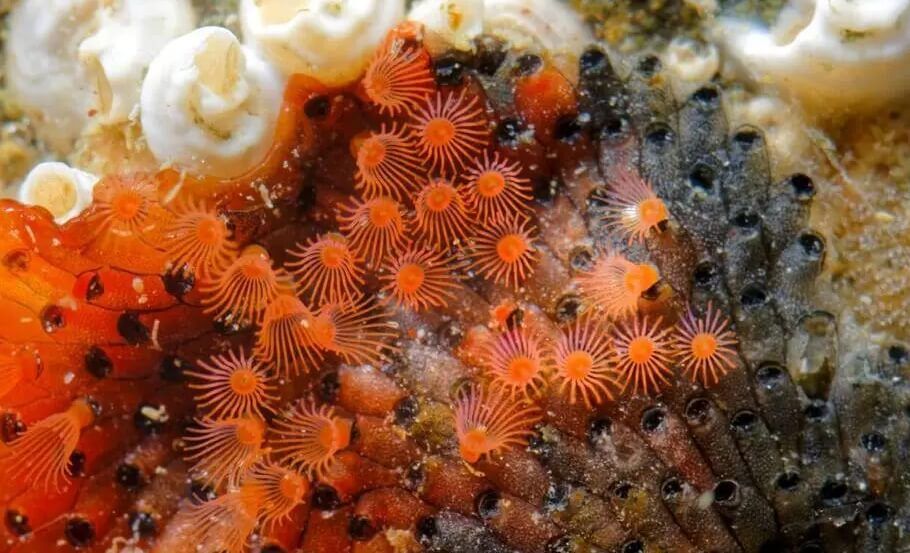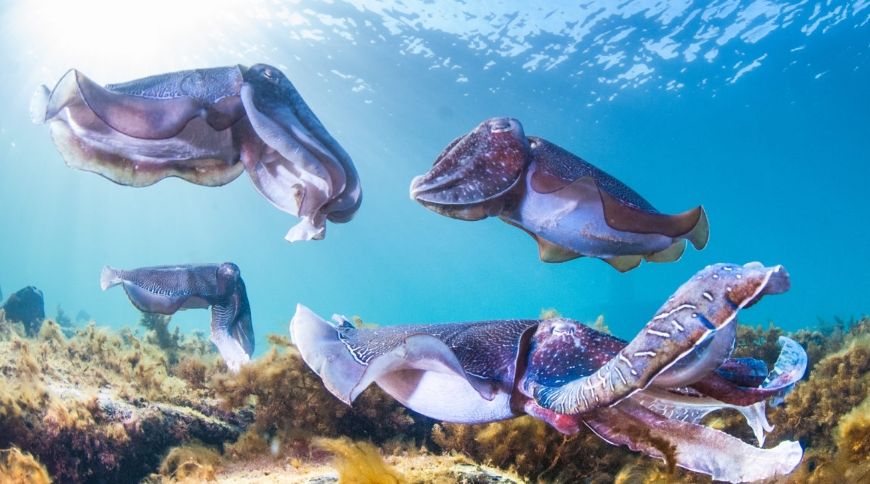Horseshoe crabs, ancient living fossils that have remained relatively unchanged for millions of years, possess intriguing features that set them apart from other creatures. One of their most fascinating attributes is their eyes, which protrude from the outer surface of their large carapace while the rest of their bodies remain concealed within. A recent scientific article delves into the unique eye structure of horseshoe crabs, shedding light on this captivating aspect of their biology.
Horseshoe crabs, a group of large marine invertebrates, are represented by only a few extant species. Possessing massive exoskeletons and menacing tail spikes, they often gather in large clusters during their breeding season, making an impressive spectacle along the shore. Despite their intimidating appearance, these creatures are harmless to humans and, in fact, offer numerous benefits. They are collected in large quantities from the shore and utilized as livestock feed, fertilizer, and subjects of scientific research.
Although they are colloquially referred to as “horseshoe crabs,” these extraordinary creatures are more closely related to spiders and scorpions than to true crabs. Biologically, they fall under the taxonomic group Chelicerata, sharing common ancestry with these arachnids.
Horseshoe crabs are considered living fossils due to their striking resemblance to their ancestors from the Paleozoic era, dating back hundreds of millions of years. Among their distinctive features, their eyes have been a subject of great interest to biologists.
In a groundbreaking study published in the journal Advanced Science, researchers have now comprehensively examined the visual organs of the horseshoe crab species Limulus polyphemus. Like other arthropods, horseshoe crabs possess compound eyes. This type of eye structure combines multiple simple eyes, acting as lenses that collect light from various angles and transmit it to light-sensitive cells to form images.
“Compound eyes represent nature’s solution to the need for a wide field of view with a small eye. This challenge is akin to what modern camera designers face when striving to create compact cameras capable of capturing a viewing angle exceeding 90 degrees,” stated Professor Yael Politi, the research leader from the Technical University of Dresden (Germany).
Remarkably, the compound eyes of horseshoe crabs are not only large but also fundamentally different from those found in flies, spiders, or shrimp. Unlike other arthropods, whose simple eyes consist of glassy proteins, horseshoe crabs have evolved to employ their cuticle—the same material that forms their outer shell and legs—as the primary component of their eyes.
The arthropod cuticle is a robust and flexible biological composite composed of proteins and chitin, a carbohydrate polymer. Its physical properties can vary based on chemical composition, leading to diverse applications in different invertebrates.
The unique eyes of horseshoe crabs are a prime example of the innovative use of the cuticle. The outer transparent shell of their eyes, known as the cornea, comprises hundreds of elongated cuticle cones that point inward. These structures act as lenses, focusing light onto the light-sensitive cells.
To gain a comprehensive understanding of the horseshoe crab cornea, the researchers employed X-ray diffraction analysis and advanced modeling techniques, enabling them to determine the refractive index of light with high precision. Their investigation unveiled the cornea’s special architecture, featuring a combination of chitin and proteins with bromine inclusions, resulting in an optimal gradient of optical properties. The result is a matrix in which molecules are cross-linked, some regions contain more water than others, and numerous pores are present.
Surprisingly, the seemingly primitive eyes of horseshoe crabs exhibit distinct behaviors in direct light compared to light falling at an acute angle. The unique optical properties of their cornea arise from a hierarchical organization that yields various physical effects.
“As we concluded our study, we were particularly amazed by the remarkable efficiency of the cuticular lenses. In fact, the horseshoe crab has even evolved a special pigment to reduce the amount of light collected by these lenses,” added Professor Politi.
By unraveling the intricate visual capabilities of horseshoe crabs, this research opens new avenues for understanding the remarkable adaptations of these ancient marine creatures. The revelation of their unique eye structure serves as a testament to the wonders of nature’s design and evolutionary ingenuity, making horseshoe crabs even more captivating as real-life living relics of our planet’s ancient past.










